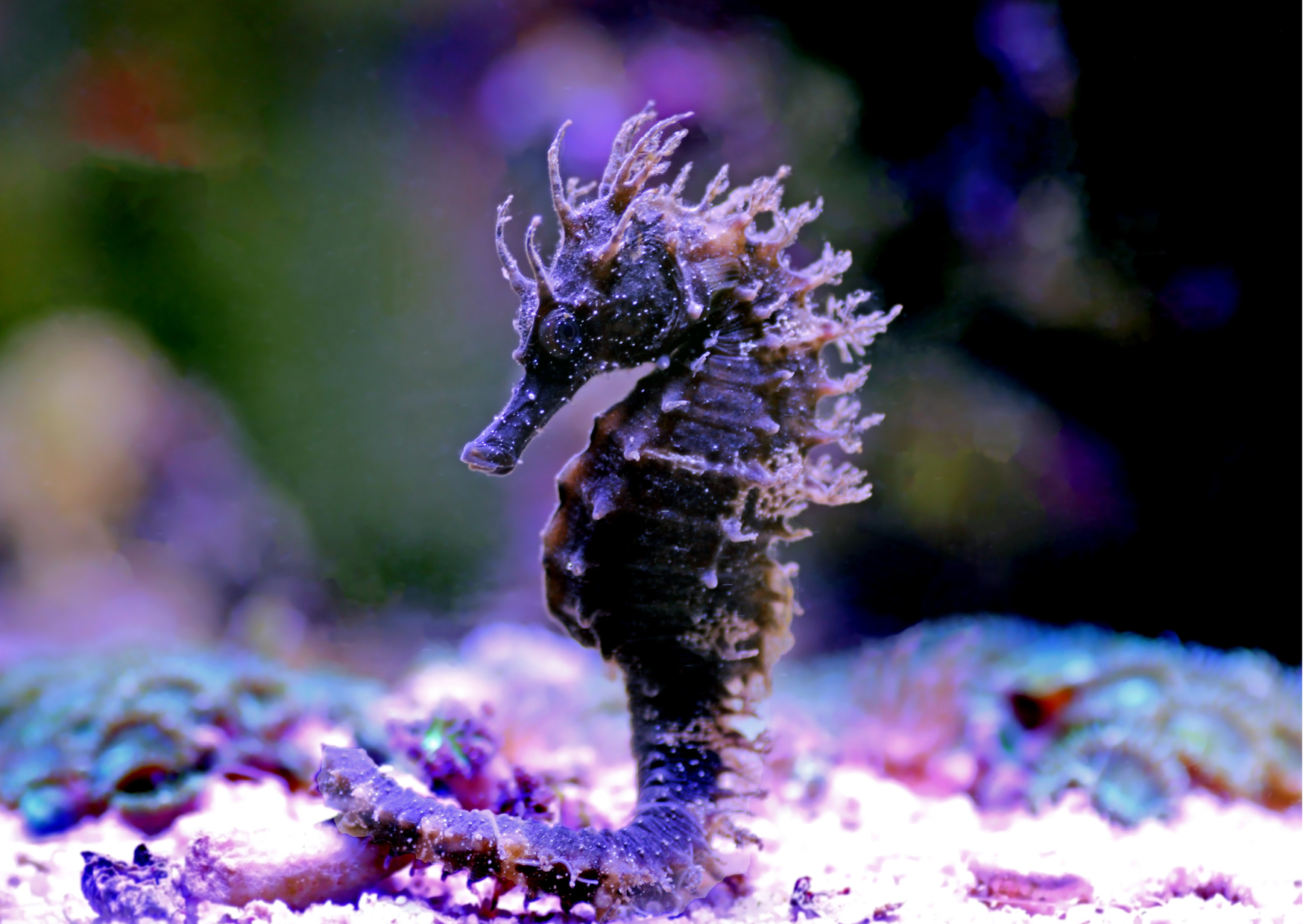Next working day delivery with Royal Mail Tracked 24
Did You Know? Seahorses

Did You Know? Seahorses
Seahorses (genus hippocampus) have many unique traits, but come with a reputation of being difficult and demanding to keep. Hippocampus are unmistakable with their upright swimming position and elegant appearance. Seahorses are closely related to pipefish, and are members of the same family Syngnathidae.
Seahorses are marine fish, and thus need the highest water quality and suitable filtration if kept in captive aquaria - they are not something that can be placed in an existing marine aquarium with other fish.
Seahorses are weak swimmers, so a specialist aquarium with sponge-based filters is required to prevent them from being sucked into the fast moving currents produced by traditional filters. The slowest swimming fish in the world is the Dwarf seahorse, which manages only 150cm per hour!
Here are some interesting facts about seahorses:
- The hippocampus in a human brain is named after the scientific name for seahorses, because it looks like one!
- Seahorses have the fastest-evolving genome of any fish!
- The footprint of a female seahorse's territory is around 100m².
- Whereas the footprint of a male's territory is only 0.5m².
- Male Seahorses give birth to the young instead of females.
- Seahorses have been found living in UK waters, and are regularly spotted in the Thames estuary and off the coast at Selsey, West Sussex!
- The dorsal fin of a seahorse flaps at a rate of 35-70 times per second when seahorses swim!
- Seahorses' eyes work independently - they can look forwards and backwards at the same time!
- A female seahorse can deposit a maximum of 1500 eggs in a males pouch!
- Around 150 million seahorses are caught each year for use in Chinese traditional medicine.
- A seahorse needs to eat 30-50 times a day to make up for not having a stomach.
- The oldest seahorse fossils date back 13 million years!
To browse our range of marine aquariums please click here.
To browse our range of protein skimmers online please click here.
Photo credit(s): Canva Pro Licence






